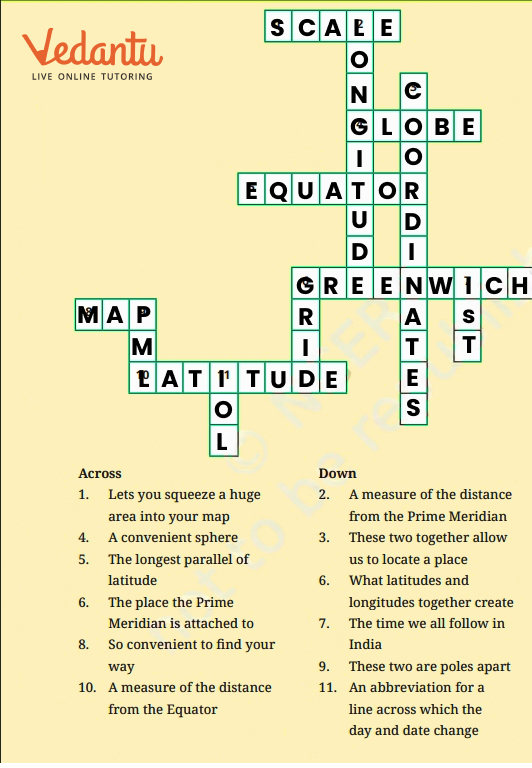Social Science CBSE Class 6 Chapter 1 - FREE PDF Download
FAQs on NCERT Solutions for Class 6 Social Science Chapter 1 Locating Places On Earth
1. What are latitudes and longitudes according to NCERT Solutions Class 6 SST ch 1?
Latitudes are imaginary horizontal lines that run parallel to the Equator, while longitudes are vertical lines that run from the North Pole to the South Pole. These lines help in locating places on Earth.
2. Why is the Prime Meridian important?
The Prime Meridian, located at 0° longitude, divides the Earth into the Eastern and Western Hemispheres and is the reference point for time zones worldwide.
3. How are time zones related to longitudes?
Time zones are based on longitudes, with the Earth divided into 24 time zones, each 15° of longitude apart. Each zone represents a one-hour difference in time.
4. What is the significance of the Equator according to NCERT Solutions Class 6 SST ch 1?
The Equator is the most important latitude, dividing the Earth into the Northern and Southern Hemispheres. It is located at 0° latitude.
5. How do symbols and colours help in map reading?
Symbols and colours on a map represent various features like roads, rivers, and mountains. They make maps easier to read and understand.
6. How do latitudes and longitudes help in locating places?
Latitudes and longitudes form a grid system on the Earth’s surface, allowing us to pinpoint exact locations by using the coordinates of these lines.
7. What is the International Date Line (IDL)?
The International Date Line is an imaginary line at 180° longitude, which marks where one calendar day ends, and the next begins.
8. What is meant by the local time of a place?
Local time refers to the time based on the position of the sun at a particular location. It varies depending on the longitude of that place.
9. Why do we need standard time?
Standard time is necessary to have a uniform time across larger regions or countries, as local times can vary significantly due to differences in longitude.
10. What are conventional symbols on a map explained in Social Science Chapter 1: Locating Places on Earth?
Conventional symbols are standard symbols used on maps to represent features such as rivers, mountains, buildings, etc., making map reading easier.
11. What is Indian Standard Time (IST)?
Indian Standard Time (IST) is the time observed across India, based on the 82.5°E longitude. It ensures that the entire country follows the same time.
12. What is the significance of the Tropic of Cancer and Tropic of Capricorn?
The Tropic of Cancer (23.5°N) and the Tropic of Capricorn (23.5°S) are significant latitudes that mark the limits of the tropics, where the sun is directly overhead at least once a year.
13. What is the difference between local time and standard time explained in the Social Science Chapter 1: Locating Places on Earth?
Local time is specific to a location based on its longitude, while standard time is a uniform time used across larger regions or countries.

























